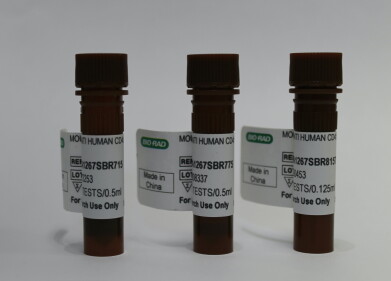Laboratory Products
Spotlight on Base Editing - The New Type of CRISPR
Mar 27 2020
Scientists at the Hubrecht Institute have broken new ground for cystic fibrosis research, using a novel type of CRISPR technique called base-editing to cure the genetic disorder in stem cells derived from human patients. CRISPR/Cas9, the original genome editing tool was developed in 2012 and empowered scientists with the scope to cut mutations out of genes and replace them with new pieces. The new base-editing technique developed at the Hubrecht Institute eliminates the need to cut and paste, making it a safer and less error-prone option.
"CF is caused by a mistake, a mutation, in the CFTR-gene leading to malfunctioning of the gene," explains Maarten Geurts, a biologist at the Hubrecht Institute. "With the new base-editing technique the mutation in the CFTR-gene can be detected and repaired without creating further damage in the genome."
New CRISPR technique offers "onsite repairs"
The findings of the study were published in the peer-reviewed journal Cell Stem Cell and explain how the team used base-editing to rework genes and cure cystic fibrosis. Geurts says the new version of CRISPR/Cas9 is a safe and effective way to treat the inherited disorder without disrupting the gene.
"In traditional CRISPR/Cas9 genome editing a specific piece of the DNA is cut out resulting in DNA damage. This is done with the aim that the cell repairs this cut using a lab-made piece of 'healthy' DNA," says Geurts. "However, in the new CRISPR-technique, called base editing, the Cas-part is altered in such a way that it no longer creates a cut, but still detects the mutation. So, instead of creating a cut and replacing the faulty DNA, the mutation is directly repaired on site, making this a more effective genome editing tool."
The challenges of multi-organ disorders
While the progress is exciting, co-researcher Eyleen de Poel says there are still plenty of challenges to overcome. Cystic fibrosis affects many different organs, meaning it could be more difficult to treat than diseases that affect a single organ or tissue such as Celiac disease, Addison disease and sickle cell anemia.
"This research represents a big step towards genetic repair of diseases in patients. However, a big question that remains is how to deliver the CRISPR-enzyme to the appropriate organs in the patient," says de Poel.
While the challenges are complex, the Hubrecht Institute are hoping to launch the first clinical applications for base-editing within the next five years.
From cystic fibrosis research to infectious disease vaccinations, science is at the forefront of public health. To find out more about how companies such as Bioquell are working to combat the latest COVID-19 pandemic, don't miss 'Ways to tackle the spread of coronavirus using viricidal surface decontamination.
Digital Edition
Lab Asia 31.2 April 2024
April 2024
In This Edition Chromatography Articles - Approaches to troubleshooting an SPE method for the analysis of oligonucleotides (pt i) - High-precision liquid flow processes demand full fluidic c...
View all digital editions
Events
May 05 2024 Seville, Spain
InformEx Zone at CPhl North America
May 07 2024 Pennsylvania, PA, USA
May 14 2024 Oklahoma City, OK, USA
May 15 2024 Birmingham, UK
May 21 2024 Lagos, Nigeria












.jpg)





